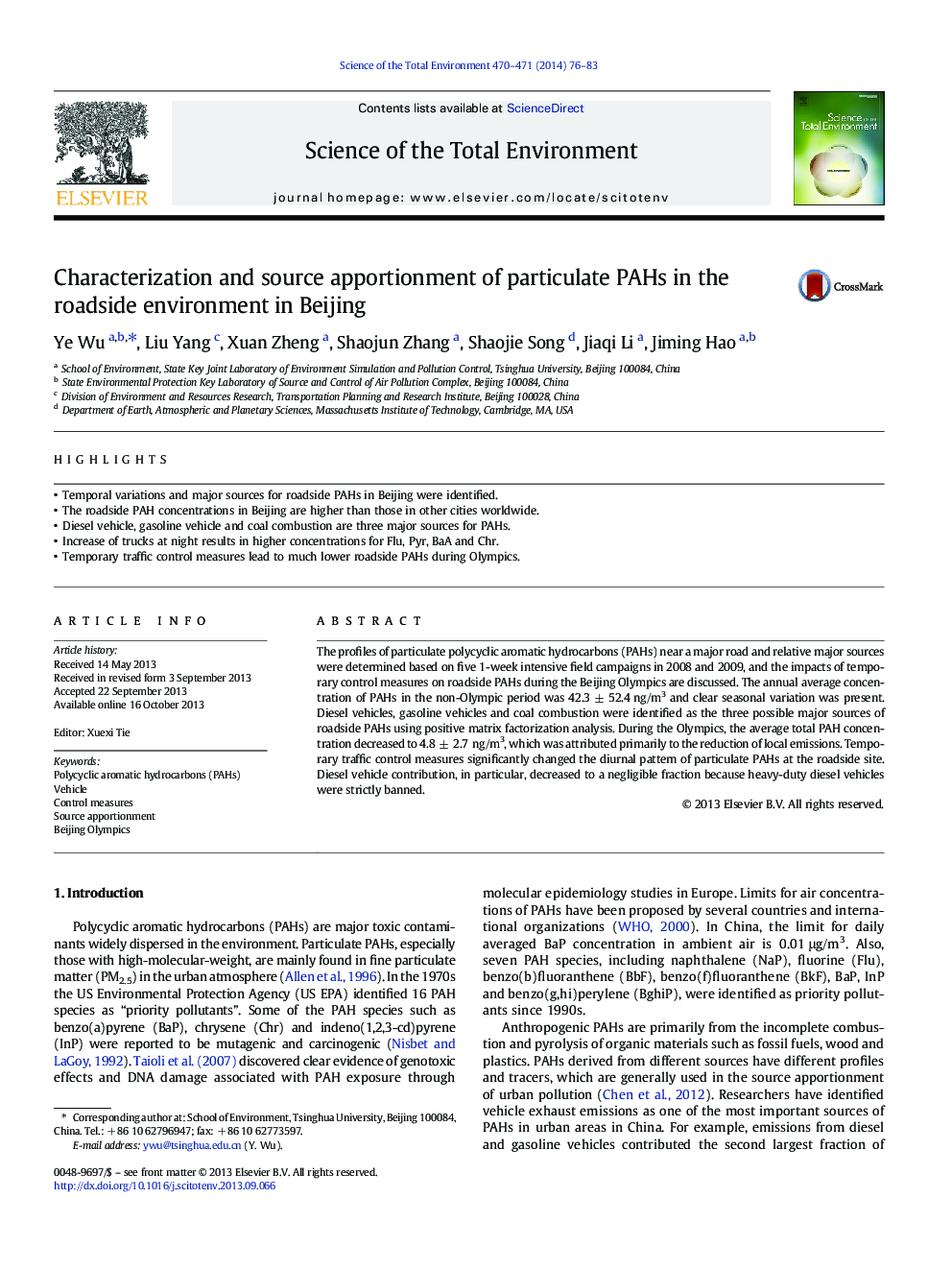| Article ID | Journal | Published Year | Pages | File Type |
|---|---|---|---|---|
| 6331304 | Science of The Total Environment | 2014 | 8 Pages |
Abstract
The profiles of particulate polycyclic aromatic hydrocarbons (PAHs) near a major road and relative major sources were determined based on five 1-week intensive field campaigns in 2008 and 2009, and the impacts of temporary control measures on roadside PAHs during the Beijing Olympics are discussed. The annual average concentration of PAHs in the non-Olympic period was 42.3 ± 52.4 ng/m3 and clear seasonal variation was present. Diesel vehicles, gasoline vehicles and coal combustion were identified as the three possible major sources of roadside PAHs using positive matrix factorization analysis. During the Olympics, the average total PAH concentration decreased to 4.8 ± 2.7 ng/m3, which was attributed primarily to the reduction of local emissions. Temporary traffic control measures significantly changed the diurnal pattern of particulate PAHs at the roadside site. Diesel vehicle contribution, in particular, decreased to a negligible fraction because heavy-duty diesel vehicles were strictly banned.
Keywords
Related Topics
Life Sciences
Environmental Science
Environmental Chemistry
Authors
Ye Wu, Liu Yang, Xuan Zheng, Shaojun Zhang, Shaojie Song, Jiaqi Li, Jiming Hao,
